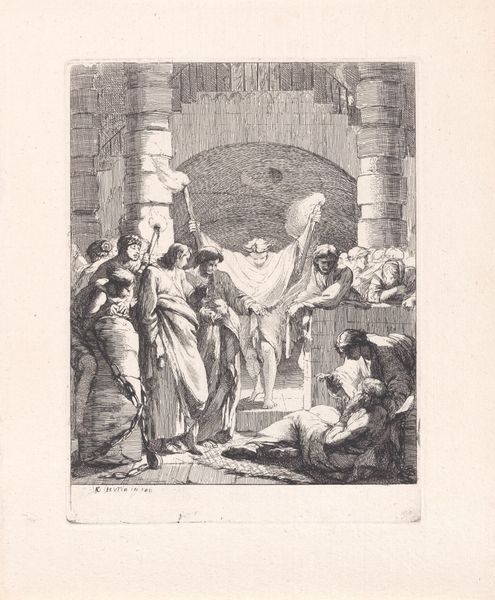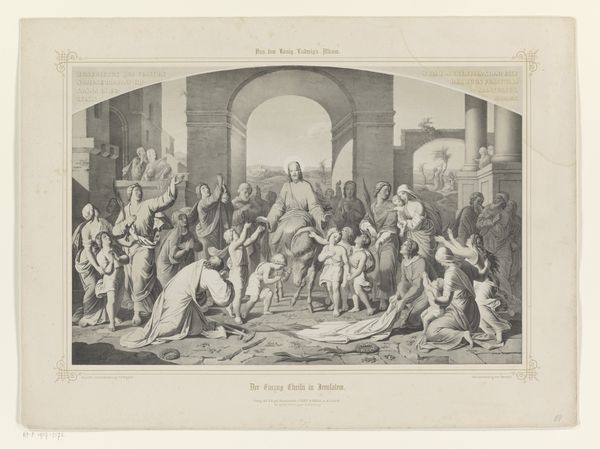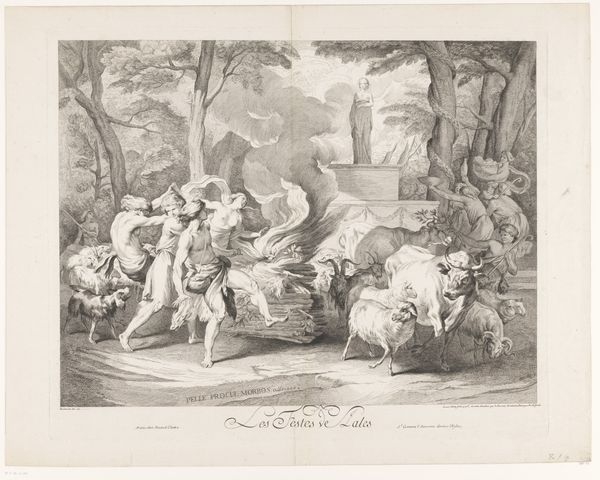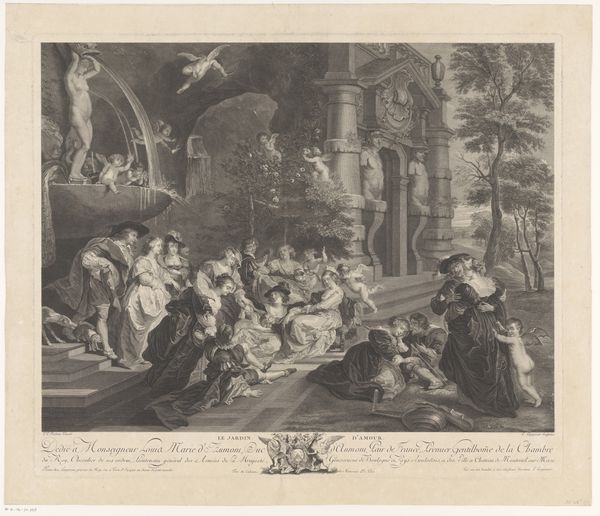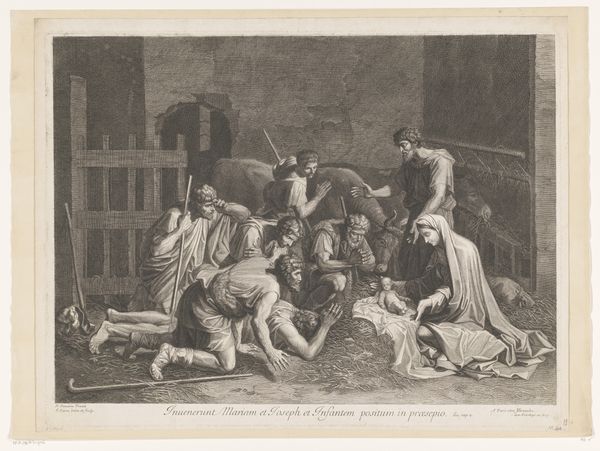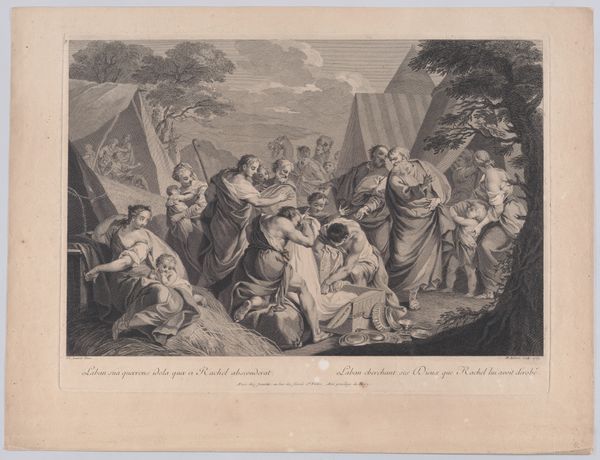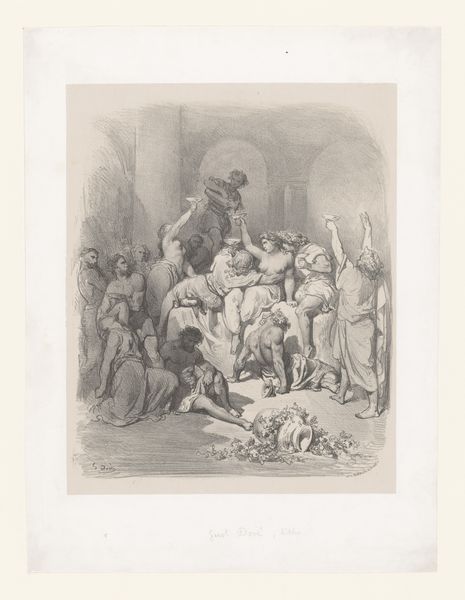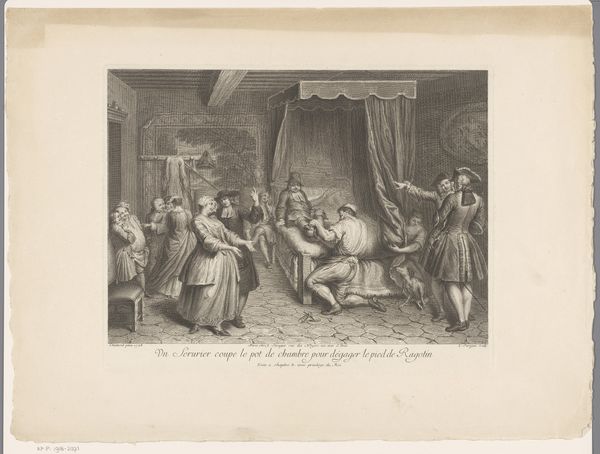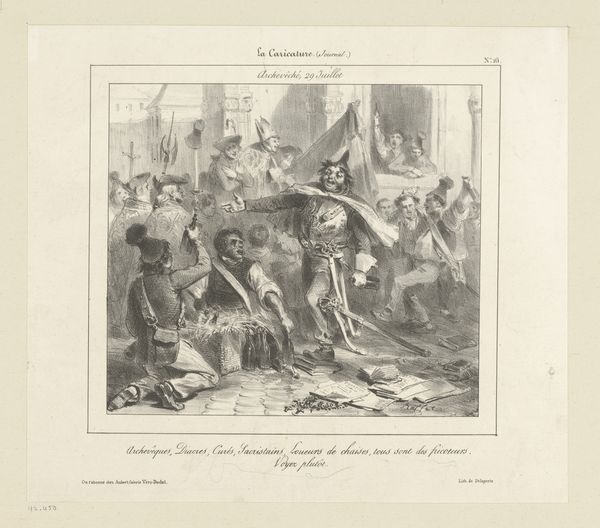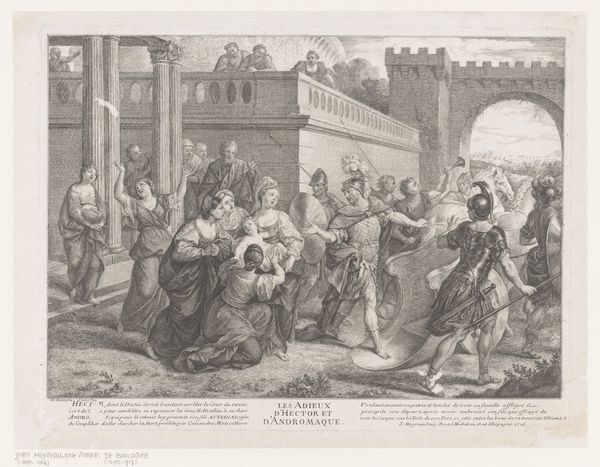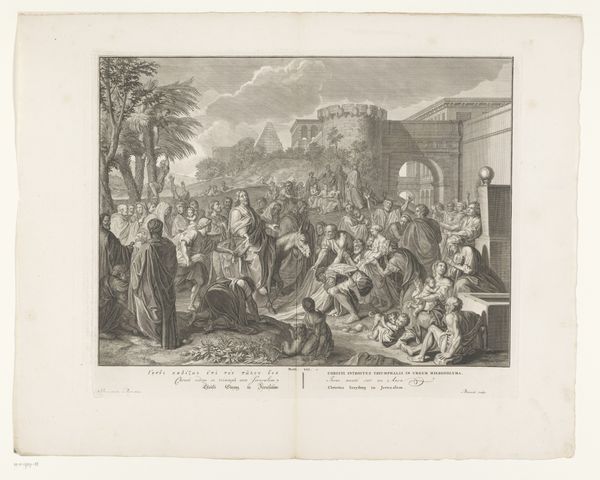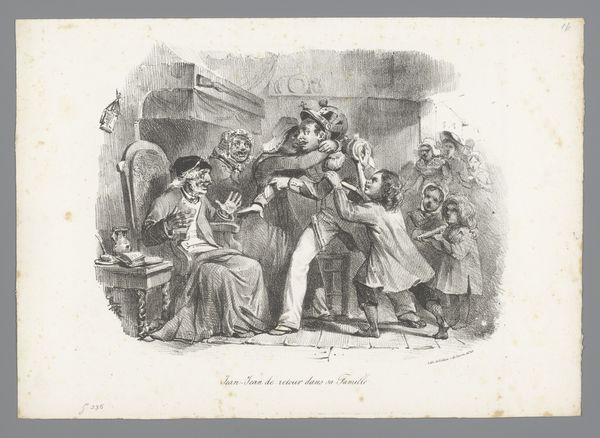
etching, engraving
#
baroque
#
etching
#
old engraving style
#
history-painting
#
nude
#
engraving
Dimensions: height 505 mm, width 615 mm
Copyright: Rijks Museum: Open Domain
Curator: This is "Feest in de Lupercal," or "Feast of the Lupercalia," an engraving from 1740, etched by Etienne Fessard, here at the Rijksmuseum. Editor: The first impression is chaotic, though controlled. The eye is immediately drawn to the movement—the running figures, the swirling robes—all rendered in exquisite detail despite the relatively limited tonal range. Curator: It does capture the frenzied energy of the ancient Roman festival, doesn't it? Lupercalia was a purification and fertility rite, a ritual meant to cleanse the city and ensure the health of its people. The Luperci, priests of the god Lupercus, would sacrifice goats and a dog, then run through the streets striking women with the goat skin thongs to ensure fertility. Editor: Notice the architectural backdrop? It's classical, precise, providing a stable framework against which the organic figures play. The archway acts as a portal, a liminal space enhancing the theatrical nature of the scene. And consider the lighting: Fessard has skillfully used line weight to create a sense of depth. Curator: The nudity also carries meaning; it suggests vulnerability but also potency, hinting at the core desires associated with this particular tradition. The ceremony by the altar invokes an idea of blood rituals. The dog sacrifice implies the ritual dimension of the archaic purification. Editor: Exactly. Semiotically, each element contributes to the overall narrative. The composition is brilliant: dynamic yet balanced, with the darker, more static group on the left offset by the flurry of activity on the right. The inscription along the bottom operates, literally and figuratively, as its foundation. Curator: What I find striking is the attempt to visually reconstruct a distant, pagan ritual. Consider that the understanding and interpreting ancient practices would hold a significant influence on how subsequent generations understood not only that society but their own sense of social order as well. Editor: I see it more as a controlled exercise. It’s very baroque but already hints at Neoclassical precision and clarity. I find it more an impressive arrangement of lines and forms within a defined space—that the image provides a glimpse into a ritualistic tradition seems almost incidental. Curator: Well, regardless, its enduring appeal lies in the capacity to remind us about aspects of social life now left unspoken. Editor: Ultimately, whether it conveys historical truth or aesthetic arrangement is a personal choice. I appreciated noticing fresh layers of visual tension and resolution while investigating it.
Comments
No comments
Be the first to comment and join the conversation on the ultimate creative platform.
